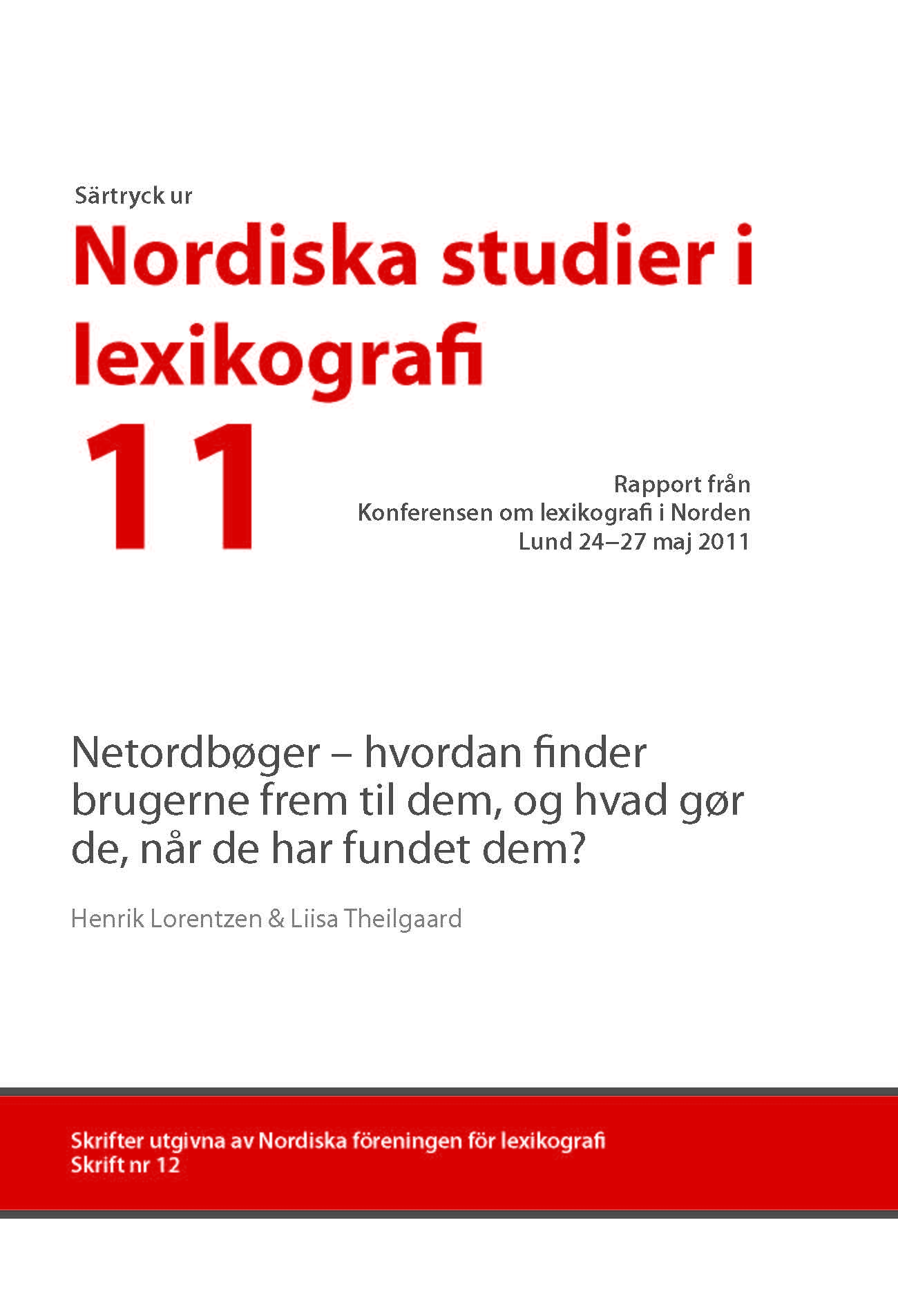Ordfrekvens och ordboksutrymme
Keywords:
ordböcker, ikonisk, beskrivningsutrymme, frekvens, högfrekventa ord, lågfrekventa ord, ordboksartiklars längdAbstract
In a linguistic description there is normally a more or less conspicious lack of balance between the space a phenomenon requires to be fully described and its frequence in actual language usage, here called a lack of iconicity. The article investigates to what degree some Danish and Swedish dictionaries are iconical in this sense, i.e. whether the space of a word in the dictionary corresponds with its actual frequence. As expected, iconicity is rather meager, the most frequent words being treated much shorter than there actual frequence would suggest and the less frequent ones the other way around, though the more comprehensive the dictionary the more iconical it normally is regarding the first category. Further, frequent nouns and adjectives can be shown to exhibit a more iconical description than frequent verbs, and compounds and derivations treated together with their base words often exhibit a (shorter and thus) more iconical description than those treated as their own entries (often iconically much too extensive). Iconicity is of course not the overall ideal state of good dictionary entries: frequent form words are often best treated rather generalized (and thus rather shortly), some less frequent words can only be described accurately if described rather extensively. Yet, it is argued that iconicity should not be dismissed alltogether but to be considered as one factor (among many other ones) when deciding upon how much space a word is worth in a dictionary.Downloads
Published
2012-01-01
How to Cite
Wendt, B.-A. (2012). Ordfrekvens och ordboksutrymme. Nordiske Studier I Leksikografi, (11). Retrieved from https://tidsskrift.dk/nsil/article/view/19377
Issue
Section
Artikler
License
Nordisk Forening for Leksikografi/NSL og forfatterne.





